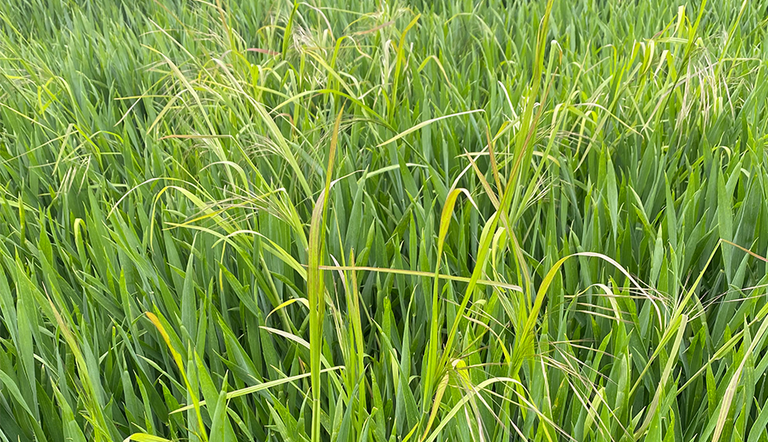
Beating brome with a barrage of herbicide actives

Whilst classified as a ‘very competitive’ weed, brome has historically been confined to field margins, with any seeds that migrated further into fields traditionally prevented from germinating by the burying action of ploughing. However, with the increasing popularity of min-till and no-till establishment systems – as a cheaper, more soil-friendly alternative to ploughing – brome populations have increased, with more plants evident towards the central parts of field put to cereals and oilseed rape.
This poses a significant threat to crop viability, not just because the vigorous growth habit of brome means it can cause yield reductions on a par with black-grass and ryegrass (a population of 5 plants/m2 can result in a 5% yield reduction in cereals), but because resistance to ALS-inhibiting herbicides has already been confirmed in UK brome populations.
Growers must therefore use a robust sequence of pre- and post-emergence herbicides containing a range of different active ingredients to ensure adequate levels of control of the UK’s five main brome species are achieved.
The five main brome species commonly found as weeds in UK arable crops are:
1. Barren or sterile brome (Bromus sterilis)
Very common throughout England and Wales, more scattered in Scotland. Very common in field margins and hedgerows as well as within arable fields.
2. Soft brome (Bromus hordeaceus)
Very common throughout the UK. Most commonly found in grassland, field margins, waste ground and roadside verges, but also occurs in arable fields.
3. Great brome (Bromus diandrus)
Mainly found in East Anglia, but scattered throughout the rest of England.
4. Meadow brome (Bromus commutatus) taxonomically is now considered to be a variety of smooth brome (B. racemosus).
Mainly found in grassland situations, especially old pastures, but also occurs in arable fields.
5. Rye brome (Bromus secalinus)
Mainly found in scattered locations in the southern half of England. Largely confined to arable fields, field margins and waste ground.
(Source: Identification of Brome grasses, Dr Stephen Moss, Rothamsted Research.)
Mapping to understand the scale of the problem
To understand the extent and scale of brome infestations, it is advisable to positively identify which species are present, and to map their location(s) in each affected field. Doing so will help to determine if the problem is getting worse and will also enable weeds to be controlled more effectively. It can also pay to have brome plants tested to determine if they are ALS resistant so that a suitable herbicide programme can be put in place.
Use the following link to identify which species of brome are present on your land: https://ahdb.org.uk/knowledge-library/arable-weeds-which-brome-species-is-in-your-field
To find out more about resistance testing go to https://projectblue.blob.core.windows.net/media/Default/Imported%20Publication%20Docs/AHDB%20Cereals%20&%20Oilseeds/Weeds/WRAG/WRAG%20Maximising%20the%20benefits%20of%20herbicide%20resistance%20testing%20(June%202020).pdf
For more general information on the control of brome visit https://ahdb.org.uk/news/use-brome-maps-to-target-weed-control
Trials highlight the best controls
Box trials carried out on behalf of ADAMA have shown that TOWER® (40 g/l diflufenican, 300 g/l pendimethalin and 250 g/l chlorotoluron) is effective against troublesome annual meadow grass and broad-leaved weeds. It also offers useful activity against sterile, meadow and rye brome, and provides good activity as a partner product in ryegrass and groundsel control programmes.
The same independent trials, which were carried out by ADAS, also indicated that the efficacy of TOWER® varies according to target species and timing of application, with each species of brome responding differently.
A tailored approach
As a result, instead of taking a ‘carte blanche’ or farm-wide approach to brome control, growers must understand exactly which species they are tackling before tailoring their weed control programme to match the growth stage of crops and germination phase of weeds on a field-by-field basis.
For example, rye and sterile brome were shown to be the most susceptible to TOWER® when applied at the pre-emergence or early post-emergence (GS11-13) timings, while meadow brome is only susceptible to TOWER® when it is applied in combination with diflufenican at the pre-emergence timing, or when applied with prosulfocarb from pre-emergence through to tillering (GS21). The addition of prosulfocarb was also shown to improve control at all timings for all species of brome.
The core message is that growers can no longer rely solely on post-emergence ALS treatments to clean-up crops in the spring. Instead, agronomists and growers should also factor in early post-emergence treatments to extend the residual life of pre-emergence applications.

Brome species are becoming more problematic in min-till systems where they can cause yield reductions on a par with black-grass and ryegrass.


